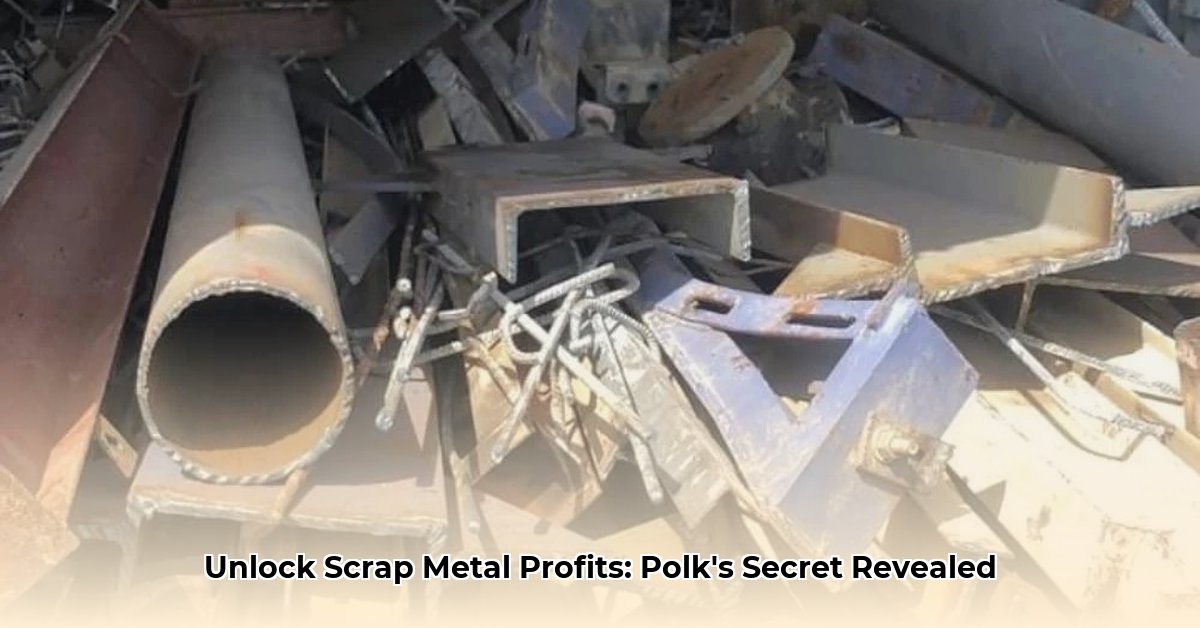
The scrap metal industry is a rollercoaster. One day, prices soar; the next, they plummet. This volatility presents a significant challenge for companies like Polk Scrap Iron & Metal, forcing them to navigate unpredictable markets and devise effective pricing strategies. This article explores the dynamics of the scrap metal market, focusing on the challenges and opportunities faced by Polk and other players in the industry. We'll examine the factors driving price fluctuations, analyze successful strategies, and assess the risks involved, offering insights into how Polk and others might thrive in this ever-changing landscape. For more on recycling, check out this Minneapolis recycler.
The Volatility of Scrap Metal Prices: A Market in Flux
Why are scrap metal prices so volatile? The answer is multifaceted. Global commodity markets play a crucial role; a sudden shift in demand from a major manufacturing hub, like China, can send prices tumbling. Supply chain disruptions—think major storms or geopolitical instability—can restrict the flow of materials, causing prices to spike. Furthermore, the lack of standardized pricing practices means that the same materials can fetch drastically different prices from different buyers, adding another layer of complexity for sellers. This inherent unpredictability necessitates strategic adaptability and risk management. How do companies like Polk Scrap Iron & Metal respond? What strategies help them succeed in this environment?
Polk Scrap Iron & Metal: A Case Study in Adaptability
Polk Scrap Iron & Metal, operating in Zanesville, Ohio, provides a compelling case study. While detailed internal information on their pricing strategies isn't publicly available, we can analyze their likely operational approaches based on industry trends and publicly accessible scrap metal pricing data. Their success likely hinges on several key factors. Do they prioritize building strong buyer relationships to ensure consistent business? Do they invest in advanced sorting techniques to sell higher-quality materials at premium prices? The answers reveal how they navigate the market's inherent uncertainties. Their story, while partially inferred, illustrates the challenges and resilience of businesses operating in this highly dynamic sector.
Strategies for Navigating Price Volatility: Actionable Insights
Successfully navigating the volatile scrap metal market demands a proactive, multi-faceted approach. The following strategies, while applicable across the industry, offer insights into Polk's potential approaches:
Market Intelligence: Continuous monitoring of market trends through industry publications and online price trackers is crucial for informed decision-making. This proactive approach allows businesses to anticipate price shifts and adjust strategies accordingly.
Quality Control and Sorting: The quality of scrap materials directly impacts the price received. Investing in advanced sorting technologies and implementing rigorous quality control measures can significantly improve profitability. This translates to higher prices for premium materials.
Strategic Partnerships: Cultivating strong and reliable relationships with buyers is key to ensuring consistent business and potentially favorable pricing structures. This stability buffers against extreme market swings.
Dynamic Pricing Strategies: Many businesses are now adopting dynamic pricing models that adjust automatically to changing market conditions. Is Polk using such a system, or are they relying on a different framework? Either approach requires careful monitoring and optimization.
Sustainability Initiatives: The increasing focus on environmental sustainability is creating a strong demand for recycled materials from environmentally conscious businesses. Adopting sustainable practices not only benefits the environment but also can enhance the company's appeal and therefore affect pricing.
Risk Assessment and Mitigation: Preparing for the Unexpected
The scrap metal industry is inherently risky. How does Polk Scrap Iron & Metal (and indeed, the industry) manage the core risks?
| Risk Category | Likelihood | Impact | Mitigation Strategy |
|---|---|---|---|
| Price Fluctuations | High | High | Diversify customer base, explore hedging strategies, leverage market data for informed pricing. |
| Supply Chain Disruptions | Medium | Medium | Develop resilient supply chains, diversify transportation options. |
| Regulatory Changes | Medium | Medium | Maintain awareness of regulatory shifts, engage in industry dialogues on policy. |
| Technological Advancements | Low | High | Invest in R&D, adapt quickly to emerging technologies. |
Effective mitigation strategies are vital for the long-term health and profitability of companies like Polk. A proactive approach, based on sound risk assessment, is essential for survival and success in this dynamic environment.
Conclusion: A Future of Transparency and Sustainability
The future of the scrap metal industry hinges on increased transparency, standardization, and a strong emphasis on sustainability. Polk Scrap Iron & Metal, along with its peers, is crucial in driving this positive transition. By embracing innovation, strategic partnerships, and adaptive pricing strategies, these businesses can not only meet the challenges of the market but also shape a more sustainable and resilient future for the industry. Embracing change and prioritizing responsible practices will likely lead to long-term success and improved profitability.